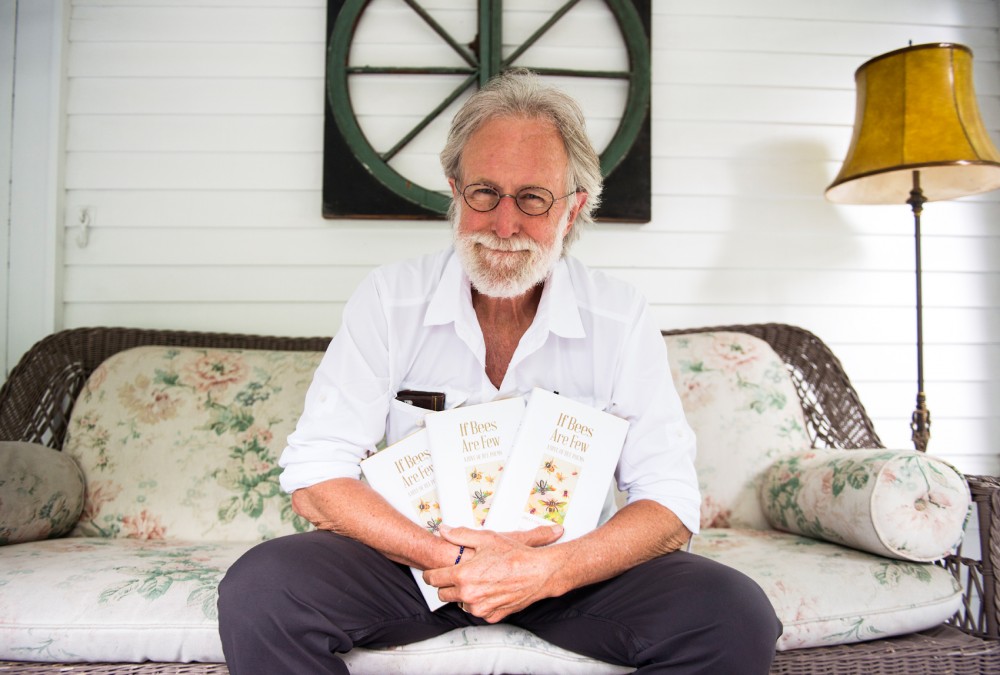For decades, writer James Lenfestey has been enraptured by bees — and he isn’t the only one.
Last month, the poet published “If Bees Are Few” — an anthology of poems with the topic of bees at the forefront — and is donating all the proceeds to the University of Minnesota Bee Lab in an effort to help protect bee populations.
Some of his friends had considered compiling similar bodies of work, Lenfestey said, because of the prevalence of bee allusions in the poetic canon.
Emily Dickinson, for instance, wrote 26 poems featuring bees, nine of which are included in Lenfestey’s anthology.
“Almost every poet worth anything has written a poem about bees,” said poet and Loft Literary Center teacher Thomas Smith, who has a few poems included in the book.
Smith was one of Lenfestey’s English students at the University of Wisconsin-River Falls in the 1960s. The two bonded over their interests in environmentalism.
Bees are rich in symbolism, making them perfect subjects of poems, he said.
“It was a book that was waiting to happen,” Smith said. “If [Lenfestey] hadn’t done it, somebody else probably would’ve.”
Lenfestey said he always found bees interesting and kept some of his own in the 1970s. “I’ve been fascinated by bees ever since.”
Marla Spivak, entomologist at the University’s Bee Lab, helped galvanize him to write the book, Lenfestey said.
Lenfestey followed Spivak’s pollinator research over the years and decided he had a chance to make a difference.
Spivak and her lab will collect the royalties from the book, published with the University of Minnesota Press.
Lenfestey has worked with the press before on another book, and the printers were excited to work with him again, said UMP’s Regional Trade Editor Erik Anderson.
Anderson said Lenfestey’s passion shows through in all of his projects.
The press has published a considerable amount of material concerning Minnesota’s natural history, from Department of Natural Resources projects to lyrical memoirs about resource protection, Anderson said, and it was there that Lenfestey’s collection found a home.
He said the book’s preorders were very strong, showing a public interest in the material.
“That [prepublication] buzz was very good,” he said.
While he doesn’t expect to raise a significant amount, Lenfestey said money from the book raises bee awareness.
The relationship between bees and humans is important, he said, which is why humans need to be proactive and help bees when their ecosystems and livelihood are in danger.
The Bee Lab recently launched its Bee Arts Program, which uses art to promote awareness about bees, and coincidentally, Lenfestey’s book fit their criteria, Spivak said.
“If you look back in art worldwide, the bee is always there because human beings have almost universally recognized the importance of bees to our lives,” Smith said.
Bees influence pollination, human food supply and have always been appealing to artists of all kinds, he said.
“Anthology … means the gathering of flowers,” Lenfestey said. “And if you think of that, referring to the bees, isn’t that kind of a beautiful metaphor for what the bees do?”








